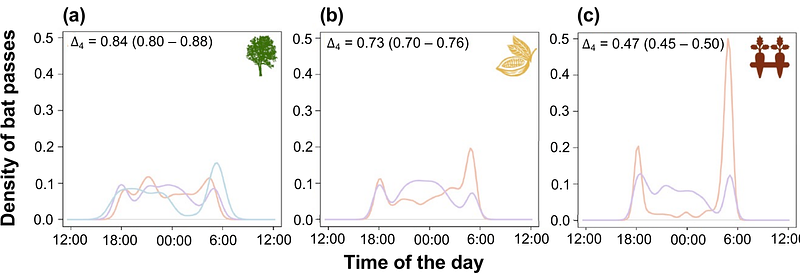Habitat use and diel activity of insectivorous bats across land-use types on an Afrotropical oceanic island

Habitat use and diel activity of insectivorous bats across land-use types on an Afrotropical oceanic island
Palmeirim, A. F.; Araujo-Fernandes, A. C.; Castro-Fernandes, A. S.; Guedes, P.; Santos, Y. d.; Alves, J. C.; Mata, V. A.; Yoh, N.; Rocha, R.
AbstractTropical island biodiversity is declining at alarming rates. Yet, understanding how species are coping with such disturbance is largely limited for afro-tropical islands. Here we examined habitat use and diel activity of insectivorous bats across different land-use types covering the endemic-rich Principe Island, Central West Africa. We acoustically surveyed insectivorous bats across 48 sites throughout old-growth forests, secondary re-growth forests, cocoa shaded plantations, and horticultures. Based on 17,527 bat-passes, we were able to record all four insectivorous bat species known to occur on Principe, including the recently described Pseudoromicia principis, the most frequently recorded species. Taphozous mauritianus, a data deficient open-space forager, was the least recorded species. Species activity was lowest in old-growth forests, as well as the activity of the edge-forager P. principis. The activity of the open-space forager Mops pumilus was lowest in forest habitats, whereas Hipposideros ruber, a forest forager, was restricted to these habitats. Diel activity patterns of M. pumilus varied between forests and non-forest habitats, whereas those of P. principis remained similar. Interspecific activity overlap decreased towards more altered land-use types. Our findings emphasize that conserving the remaining forests, along with the current mosaic of land-uses, is needed to maintain Principe\'s complete insectivorous bat assemblages.